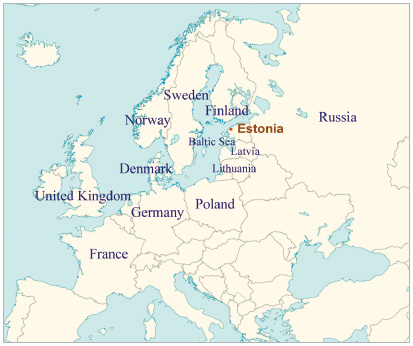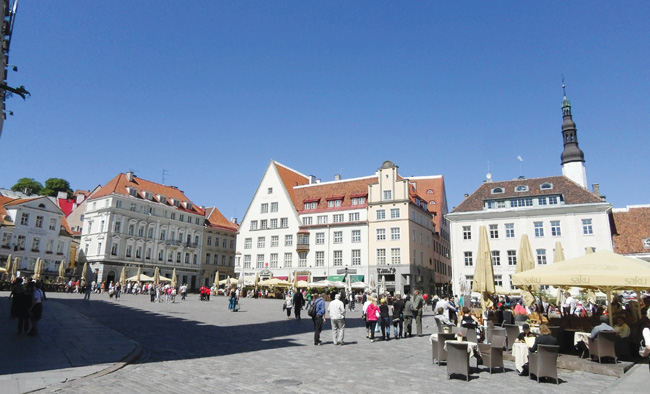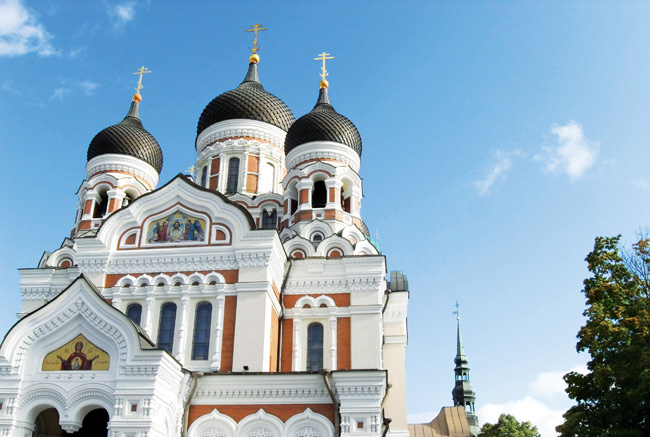

 |
 Mission Status Mission Status |
 2010 Estonia 2010 Estonia |
 2009 Israel 2009 Israel |
 2006 New York 2006 New York |
 2006 Congo 2006 Congo |
 2004 Peru 2004 Peru |
 2004 Germany 2004 Germany |
 2003 Russia 2003 Russia |
 2002 India 2002 India |
 2002 Honduras 2002 Honduras |
 2001 Philippines 2001 Philippines |
 2001 Kenya 2001 Kenya |
 2000 Pakistan 2000 Pakistan |
 2000 Nagoya, Japan 2000 Nagoya, Japan |
 2000 Uganda 2000 Uganda |
|
 |

 |
 Manmin Newspaper Manmin Newspaper |
 Magazine "MANMIN" Magazine "MANMIN" |
|
 |
|
|
  |
 Mission > Overseas Mission > Estonia Crusade Mission > Overseas Mission > Estonia Crusade |
|
|

|
| HIT |
16228 |
| DATE |
2010년 10월 31일 일요일 |
|
| |
[Special] Estonia, a Beautiful Country in the Northern Europe

 Estonia, which is a state in the Baltic Region of the Northern Europe in the world map, does not sound familiar to Koreans, but a very renowned land for travel mania. It is because it has many beautiful remains of the culture of Middle Age. Estonia is bordered to the north by the Gulf of Finland, to the west by the Baltic Sea, to the south by Latvia, and to the east by the Russian Federation. Estonia, which is a state in the Baltic Region of the Northern Europe in the world map, does not sound familiar to Koreans, but a very renowned land for travel mania. It is because it has many beautiful remains of the culture of Middle Age. Estonia is bordered to the north by the Gulf of Finland, to the west by the Baltic Sea, to the south by Latvia, and to the east by the Russian Federation.
It is influenced by a temperate seasonal climate, and the Estonians are a Finnic people, and the official Estonian language is closely related to Finnish.
Tallinn, Capital City of Estonia, Which Has Many Cultural Remains
Tallinn, the capital and largest city of Estonia, is situated on the northern coast of the country, on the banks of the Gulf of Finland, 80 km (50 mi) south of Helsinki, west of Saint Petersburg. Historically, the city of Tallinn has been attacked, sacked, razed and pillaged on numerous occasions. Although extensively bombed by Soviet air forces during the latter stages of World War II, much of the medieval Old Town still retains its beauty. So, the Tallinn Old Town was declared World Heritage Site by the UNESCO in 1997.
There is no doubt that Tallinn is the biggest centre for tourists in Estonia. The historic Old Town with its numerous sights is one of the most impressive medieval monuments in Europe. At the same time, the growing economic metropolis is the only traffic junction in the country and provides to its visitors numerous international and regional transport connections. Major sights include Raekoja plats (Town Hall square), the town walls and towers (notably 'Fat Margaret' and 'Kiek in de Kök') and St Olaf church tower (124 m).
Estonia regained its independence on August 20, 1991. It has since embarked on a rapid program of social and economic reform. Today, the country has gained recognition for its economic freedom, its adaptation of new technologies and was one of the world's fastest growing economies for several years. However, Estonia's economy was the second worst hit of all 27 European Union members in the 2007–2010 economic crisis, contracting sharply in the first quarter of 2009. In March 2007, Estonia allowed Internet voting for Parliamentary elections, becoming the first country to do so. Prime Minister Andrus Ansip's Reform Party narrowly won the election, taking 31 out of 101 seats, just two more than the Centre Party.

Tallinn City Hall
Estonians Persistently Preserved Their Identity Despite Incessant Invasions of Foreign Powers
Throughout much of its history, Estonia surrounded with the shores of the Baltic Sea and the Gulf of Finland has been subjugated by foreign occupying powers. However, Estonians stubbornly preserved their identity through foreign dominations and finally were victorious in their War for Independence in 1918-1920, fighting both Soviet Russia and the German Landeswehr colonizers. In 1920, the Russians agreed and signed on the treaty of Tartu, and recognized Estonia as an independent country. During its independence 1918-1940, Estonia was a model society in the community of nations, a member of the League of Nations. Estonia guaranteed cultural autonomy to all minorities, including its Jewish population. In 1940, breaking all agreements Moscow had with Estonia, the Soviet Army occupied Estonia, forced a pro-Moscow puppet government on the country and illegally annexed it into the Soviet Union. A reign of terror ensued, in which Estonia's top political, military and other leaders were arrested and shot, and thousands deported in cattlecars to Siberia, where few survived. Nazi Germany occupied Estonia until 1944. With the return of the Soviets, the renewed Soviet occupation brought another reign of terror, with more deportations to Siberia. In a conscious effort to impart Russian culture in Estonia, the Soviets brought in tens of thousands of Russians and others to colonize the country. The large Russian ethnic population currently in Estonia is the consequence of that deliberate policy of genocide.
However in the late 1980s the Communist tyranny began to unravel. The Soviet leader, Gorbachev, introduced policies of glasnost (openness) and perestroika (reconstruction). Once again the Estonian began to clamour for independence. In November 1988 the Supreme Soviet (a kind of parliament) in Estonia declared that Soviet laws would only apply in Estonia if it agreed to them. Also in 1988 Estonia was given some economic autonomy. Estonia declared independence from the Soviet Union in March 1990. Soviet resistance ensued, but after recognition by European and other countries, the Soviet Union acknowledged Estonian nationhood on September 6, 1991. UN membership followed on September 17. In 2004, Estonia became a member of the European Union as well as of NATO.

Alexander Nevsky Cathedral (Estonia's main Russian Orthodox cathedral)
Ethnic Groups and Religion of Estonia
Estonia is bordered to the north by the Gulf of Finland, to the west by the Baltic Sea, to the south by Latvia (343 km), and to the east by the Russian Federation (338.6 km). The territory of Estonia covers 45,227 km2 (17,462 sq mi) and the official Estonian language is closely related to Finnish. Estonia is a democratic parliamentary republic and is divided into fifteen counties. The capital and largest city is Tallinn. With a population of only 1.34 million, Estonia is one of the least-populous members of the European Union. Today's Estonia is a multinational country where, according to the 2000 census, altogether 109 languages are spoken. 67.3% of Estonian citizens speak Estonian as their mother tongue, 29.7% – Russian and 3% speak other languages. As of 2 July 2010, 84.1% of Estonian residents are Estonian citizens, 8.6% are citizens of other countries and 7.3% are 'citizens with undetermined citizenship.' Since 1992 roughly 140,000 people have acquired Estonian citizenship through naturalization. Estonia's constitution guarantees freedom of religion, separation of church and state, and individual rights to privacy of belief and religion. Estonia has one of the highest level of irreligious individuals in the world; nearly three-quarters of the population stating no specific religious affiliation in 2000. The largest religious faith in the country is Evangelical Lutheranism, adhered to by 14.8% of the population, principally ethnic Estonians. Just behind this group in size is the Eastern Orthodox, practiced chiefly by the Russian minority. According to the census of 2000, there were about 152,000 Lutherans, 143,000 Orthodox Christians, 5,000 Roman Catholics, and 1,000 adherents of Taaraism or Maausk in Estonia. In addition there were around 68,000 people who declared themselves to be atheists.

St. Nicholas' Church
|
|
|



